Itchy paws, red ears, and upset tummies can leave any dog feeling awful. Many opt for Homemade Dog Food for Allergies to ease discomfort and promote healthy skin. This guide combines expert vet advice with easy kitchen steps. It shows that feeding your dog foods like those in a Pet-iterranean diet, full of whole foods and Omega-3s, can reduce inflammation and greatly help with itchy skin.
You’ll find vet-approved dog food recipes, tips on portion sizes, and easy cooking steps that fit into your day. Favorites from HICC Pet include dishes like turkey and sweet potato, salmon and quinoa, and chicken and rice. Other tasty meals are lamb with lentils, venison with peas, whitefish and carrot, duck with green beans, turkey and oatmeal, and beef with pumpkin. Also, Dr. Dody’s Holistic Vet Blend offers an Instant Pot turkey–quinoa meal with kale, carrots, bone broth, and fish oil, helping fight inflammation without harmful additives.
This plan focuses on a limited-ingredient diet, using gentle fibers and both lean and unique proteins. Such meals are designed to decrease common allergy triggers. These include hot spots, paw licking, and ear infections. While the advice here is hands-on, teaming up with your vet to verify your dog’s needs and track improvements is also suggested.
Looking ahead, the guide covers how to use simple ingredients, make wise food swaps, and create nutritious meals easily. You’ll get insights into hypoallergenic dog food making, the importance of protein rotation, and nutritional boosts from fish oil, antioxidants, and calcium. The aim? To soothe your dog’s skin, improve digestion, and offer lasting comfort and happiness.
Signs, Triggers, and Diagnosis of Canine Allergies and Sensitivities
Allergies in dogs can be confusing, but spotting patterns helps. Look at when symptoms happen, where on the body, and any changes in the belly. Taking notes on food, walks, the time of year, and how often you clean will help your vet.
Common symptoms linked to diet and environment
Signs of food and environmental allergies in dogs are similar. You might see itchy skin, a lot of paw licking, shaking of the head, ears that are red, and areas of sore skin. Some dogs might drag their bottoms or chew at the base of their tail. You might also notice sneezing, a runny nose, or coughing. Look out for loose stool, gas, or throwing up around meal times, as they can hint at food issues.
Patterns are key. Constant ear infections and tummy trouble could mean a food problem. If symptoms change with the seasons, or if red paws follow walks in the grass, that suggests pollen or dust allergies.
Food vs. environmental vs. flea allergies: what vets look for
Vets begin with the dog’s history and a thorough check-up. They think about common food triggers like beef, dairy, eggs, wheat, or soy. They also consider pollen, dust mites, and mold. A specific itch near the tail often points to flea allergies. They might recommend skin or blood tests to identify what’s causing the reaction in the environment.
If a dog has symptoms all year, the vet might focus more on diet. With clear signs of flea issues, using good flea control methods—like products from Seresto, NexGard, or Bravecto—can help stop problems right at the source.
Elimination diets and limited-ingredient trials for accurate diagnosis
An elimination diet cuts down on different foods to see patterns. For weeks, you give your dog food with just one protein and one carb they’ve never had before. Skip any treats, flavored medicines, and people food.
Watch their skin, ears, stool, and how active they are. If things get better, slowly add back the usual food to see if symptoms come back. This careful method helps figure out what foods are okay and which ones aren’t.
When to consider hydrolyzed or novel proteins during testing
If usual proteins are a problem, trying new ones like venison, rabbit, or duck might help. Hydrolyzed protein food breaks down proteins so the body’s less likely to react badly.
These choices work well in an elimination diet when previous foods were mixed or unclear. Stick to one option at a time. Keep everything else simple and write down how your dog reacts to get clear answers.
Keyword set used: dog allergy symptoms; canine food allergy signs; environmental allergies in dogs; flea allergy dermatitis; elimination diet for dogs; hydrolyzed protein diet; novel protein dog food; limited-ingredient dog diet.
Key Nutrients and Anti-Inflammatory Foods for Itchy Skin Relief
An anti-inflammatory dog diet helps calm irritated skin and reduce scratching. Focus on simple, fresh components: about half protein, a quarter vegetables, and a quarter gentle starches. Don’t forget the right kinds of fats and calcium. This “Pet-iterranean-style” plan leans on antioxidant-rich foods and whole ingredients that bolster skin and immune health.
Omega-3 is key in lessening redness and flaking for dogs. Opt for fish oil from reliable brands and include sardines or salmon in water. Begin with small amounts and slowly increase to what your vet recommends. This can prevent stomach upset. Many pet owners notice their dogs have softer coats and less irritation soon after.
Colorful veggies provide polyphenols and vitamins that protect cells. Include antioxidant-rich foods like blueberries, spinach, and carrots. Steam or chop them to make digestion easier. Remember to serve small amounts to avoid digestive issues.
Select lean proteins to avoid upsetting your dog’s stomach. Try turkey or whitefish. If allergies are a concern, venison or duck could be good alternatives. These avoid common allergens like chicken or beef. Always cook proteins thoroughly and remove any fat.
Some starches are gentle on a dog’s digestive system. Sweet potatoes and pumpkin add soluble fiber, which can help with digestion. Quinoa and rice are great for energy. They go well with fish or turkey. Always rinse quinoa to get rid of any bitter taste.
For homemade dog food, start with basic portions and adjust as needed. A good rule is about 1/2 cup per 10 pounds of your dog’s weight, twice a day. This can be tailored based on their size and needs. Keep an eye on how much they need and adjust from there.
Watch your dog’s health, how active they are, and how often they itch. You might need to adjust their food portions slightly. Dogs can differ in their dietary needs by quite a bit. Keep track of their energy levels and how their coat looks to make smart updates.
When prepping meals, mix in fresh proteins and various veggies. Always include Omega-3 sources in your dog’s diet. Pair these with consistent fish oil for skin health. Using a measured amount will help you keep their diet on track.
Homemade Dog Food for Allergies
Switching to minimally processed dog food can help with allergies. It reduces the body’s exposure to additives. Owners can quickly change the food if it causes skin or ear problems.
HICC Pet says special recipes can soothe the skin and reduce hot spots. These recipes work best with regular cleaning and a good environment. Tools like skin sprays and coconut oil wipes help keep the skin healthy.
Dogs on a “Pet-iterranean” diet eat whole foods. They get lean proteins, fruits, veggies, and healthy fats. This diet includes Omega-3s, antioxidants, and fiber, which are great for dogs with allergies.
Home cooking makes trying new foods easier. Owners can give their dogs one protein and one carb at a time. This helps find out which foods are safe, then move to making full meals.
There are quick benefits to making your dog’s food. You know exactly what’s in it, can switch out foods, and try new proteins easily. Adding fish oil and bone broth helps with skin, coat, and joints.
For many families, making dog food every week is easier. It keeps the diet consistent. Always check with a vet to make sure the diet is safe and right for your dog.
Vet-Approved, Allergy-Friendly Listicle Recipes and Meal Ideas
These recipes are great for dogs with allergies. They use simple ingredients. You can switch up the proteins to keep your dog’s meals exciting. Watch how your dog reacts in terms of their skin, stool, and energy levels. Start with about 1/2 cup for every 10 pounds your dog weighs. Then, adjust the amount based on their activity level and health condition.
Turkey and Sweet Potato, Chicken and Rice, and Ground Turkey with Veggies:
To make turkey and sweet potato dog food, mix together 1 cup of cooked ground turkey with 1/2 cup of mashed sweet potatoes. Also, add in 1/4 cup of cooked peas and 1 tablespoon of olive oil. This will make 2 cups of food. For a chicken and rice casserole: combine 1/2 cup of cooked shredded chicken with 1/4 cup of cooked white rice. Add 1/4 cup of steamed broccoli and 1/4 cup of grated carrots. Then, bake it at 350°F for about 20 minutes to get 1 1/4 cups of food. For ground turkey with veggies: simmer 1 lb of ground turkey in 6 cups water with 1 tablespoon of coconut oil. Then, add 1/2 cup carrots, 1/4 cup broccoli, 1/4 cup cauliflower, and a fish oil capsule. Cook 1/2 cup rice and mix it in.
Salmon or Whitefish blends with quinoa, carrots, and green beans:
Making a salmon quinoa dog recipe is easy. Use 1/2 cup of cooked salmon, 1/2 cup of cooked quinoa, 1/4 cup of steamed carrots, and 1/4 cup of steamed green beans. This makes 2 cups. For whitefish, mix 1/2 cup of cooked, flaked whitefish with 1/4 cup of mashed carrots and 1/4 cup of cooked brown rice. Also, add 1 tablespoon of fish oil. You’ll get 1 cup of food. These options are great if fish is a new protein for your dog.
Beef or lamb stews with pumpkin, lentils, spinach, and zucchini:
For beef and pumpkin stew, use 1/2 cup of cooked ground beef and 1/4 cup of pumpkin puree. Add 1/4 cup of cooked brown rice and 1/4 cup of chopped spinach. Warm it slightly; this recipe makes 1 1/4 cups. For lamb lentil stew, mix 1/2 cup cooked ground lamb with 1/4 cup of cooked lentils and 1/4 cup of pureed sweet potatoes. Add 1/4 cup chopped zucchini, warm it up, and cool before serving. This also makes 1 1/4 cups. Both recipes are hearty and have limited ingredients.
Duck and green bean quinoa bowls; venison and sweet pea blends:
Create a duck quinoa dog bowl with 1/2 cup of cooked shredded duck, 1/4 cup of cooked green beans, and 1/4 cup of cooked quinoa. Mix in 1 tablespoon of flaxseed oil to get 1 cup of food. For a venison and sweet pea blend, use 1/2 cup of cooked, diced venison, 1/4 cup of cooked peas, and 1/4 cup of cooked quinoa. Add 1 tablespoon of coconut oil to make 1 cup. These meals are great for rotating proteins.
Instant Pot turkey–quinoa with kale, carrots, bone broth, and fish oil:
For Instant Pot dog food, start by sautéing 3 lbs of ground turkey in 2 tablespoons of coconut oil. Add 4 oz of chopped kale, 1 lb of carrots, 2 cups of raw quinoa, and 5 cups of bone broth or water. Cook it under pressure for 4 minutes and let it release naturally for 20–30 minutes. Then, add some sources of Omega-3s, like HVB Icelandic Fish Oil or canned sardines or wild salmon. Also, mix in a canine premix. Portion the food and freeze the extras.
Pork-forward options: meatballs with oats and flax, and veggie stew:
To make pork dog meatballs, combine 1 lb of pork with 1.5 cups of quick oats, 3/4 cup of a veggie blend, and 1 teaspoon of ground flaxseed. Also, mix in 1/4 cup of plain yogurt, 1 teaspoon coconut oil, and 1 teaspoon of fish oil. Then, bake at 350°F for 25 minutes. For pork and vegetable stew: simmer 1 chopped sweet potato with 1/2 cup of green beans and 1/2 carrot in a light roux of almond meal and water. Add 1 lb of pork pieces back in, finish with fish oil, and cool before serving.
Bone broth as a nutritious topper to support hydration and joints:
To make bone broth for your dog, start by roasting 2 lbs of raw beef or chicken bones at 400°F for 30 minutes. Then, simmer them covered with water for 8–24 hours. Strain the broth and let it cool. Pour it warm over your dog’s meals to add flavor, moisture, and nutrients that are good for their joints. This works well with all the allergy-friendly recipes provided.
Tip for variety: rotate between the salmon quinoa dog recipe, duck quinoa dog bowl, lamb lentil dog stew, and turkey and sweet potato dog food. This keeps your dog’s diet interesting, promotes balanced nutrition, and is good for dogs on limited-ingredient or novel protein diets.
Smart Transitioning, Safety, and Balancing at Home
Changing your dog’s diet should be easy and smooth. Shifting to homemade dog food slowly can keep your dog’s stomach happy and energy steady. Follow a straightforward plan, watch your dog closely, and talk to your vet if you need to change anything.
Gradual switch strategies to avoid GI upset and monitor response
Start by adding a little of the new food to your dog’s usual meals over a few days. Keep the homemade amount going up only if your dog’s stools are normal and there’s no increase in scratching. Log your dog’s reactions like changes in stool, energy levels, scratching, and licking of paws while trying new foods.
Balancing macros and essentials: protein, starch, vegetables, fats, calcium
For homemade dog food, aim for 50% protein, 25% starch, and 25% vegetables. Always include healthy fats and calcium. This mix helps your dog’s skin, muscles, and gut. You can adjust the recipes if your dog has food sensitivities.
Using premixes and fish oil to fill nutrient gaps
Add a nutritional premix to cover vitamins and minerals. Some owners use the Holistic Vet Blend Canine Limited Premix with Instant Pot dishes for reliable nutrition. Including fish oil or adding sardines or salmon takes care of omega-3 needs, helping your dog’s skin and coat stay healthy.
Portion rules of thumb: cups per 10 lbs and body-weight-based feeding
Start feeding about 1/2 cup per 10 lbs of your dog’s body weight per meal, then see if you need to adjust. For daily feeding, here’s a rough guide: 0.5–1 cup for small dogs (5–10 lbs); 1–3 cups for medium dogs (11–25 lbs); 3–5 cups for larger ones (26–50 lbs); and even more for bigger dogs. Each dog is different, so the amounts can vary.
Tracking skin, ears, stool, and weight; when to adjust recipes or see your vet
Every week, check for dry skin, smelly ears, chewing on paws, poop shape, and if there’s weight gain or loss. If these issues don’t go away, you may need to change the food again, stick closely to the new diet rules, or try a different protein. Don’t forget to keep up with flea control and use skin care products as needed while your dog gets used to the new diet.
Slow changes, clear food amounts, a reliable nutrition add-on, and regular omega-3s can help make switching to homemade food easier and safer for both you and your pet.
Conclusion
Homemade diets for allergic dogs bring benefits like control and comfort. Using whole foods and gentle cooking helps owners avoid common triggers. This supports their pup’s skin health using ingredients rich in omega-3s and antioxidants.
Start with a vet-recommended elimination diet and tackle fleas and other irritants. Then, introduce novel or hydrolyzed proteins. Build meals with lean meats, veggies, and easy carbs like rice. Don’t forget to include healthy fats and calcium, supplementing with fish oil when needed. Always measure meals based on the dog’s weight and be ready to adjust.
There are plenty of flexible, tasty recipes to try. Options include turkey with sweet potato, chicken and rice, or salmon with quinoa. Add in beef or lamb dishes, duck, venison, or even a light veggie stew. Bone broth can be a comforting addition that supports hydration and joint health.
Monitor your dog’s skin, ears, stool quality, and weight. Regular check-ups and advice from a vet are crucial. Moving away from processed kibble to a real-food diet can significantly help. Many dog owners notice big improvements in their pets’ allergies with this approach.








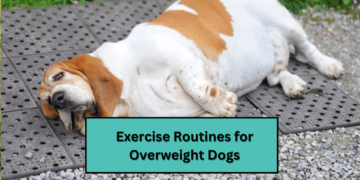

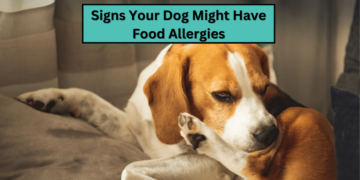

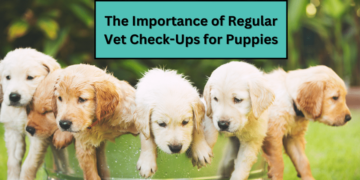
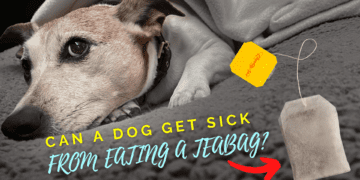

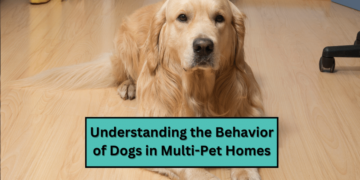
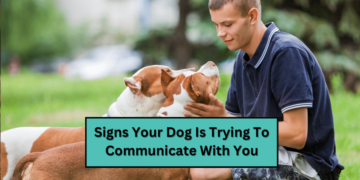
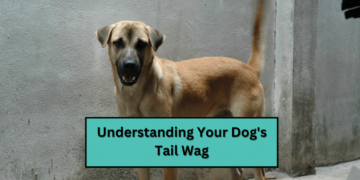

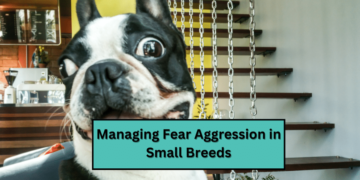
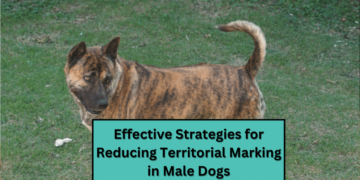


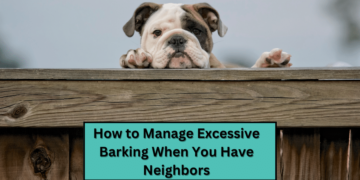










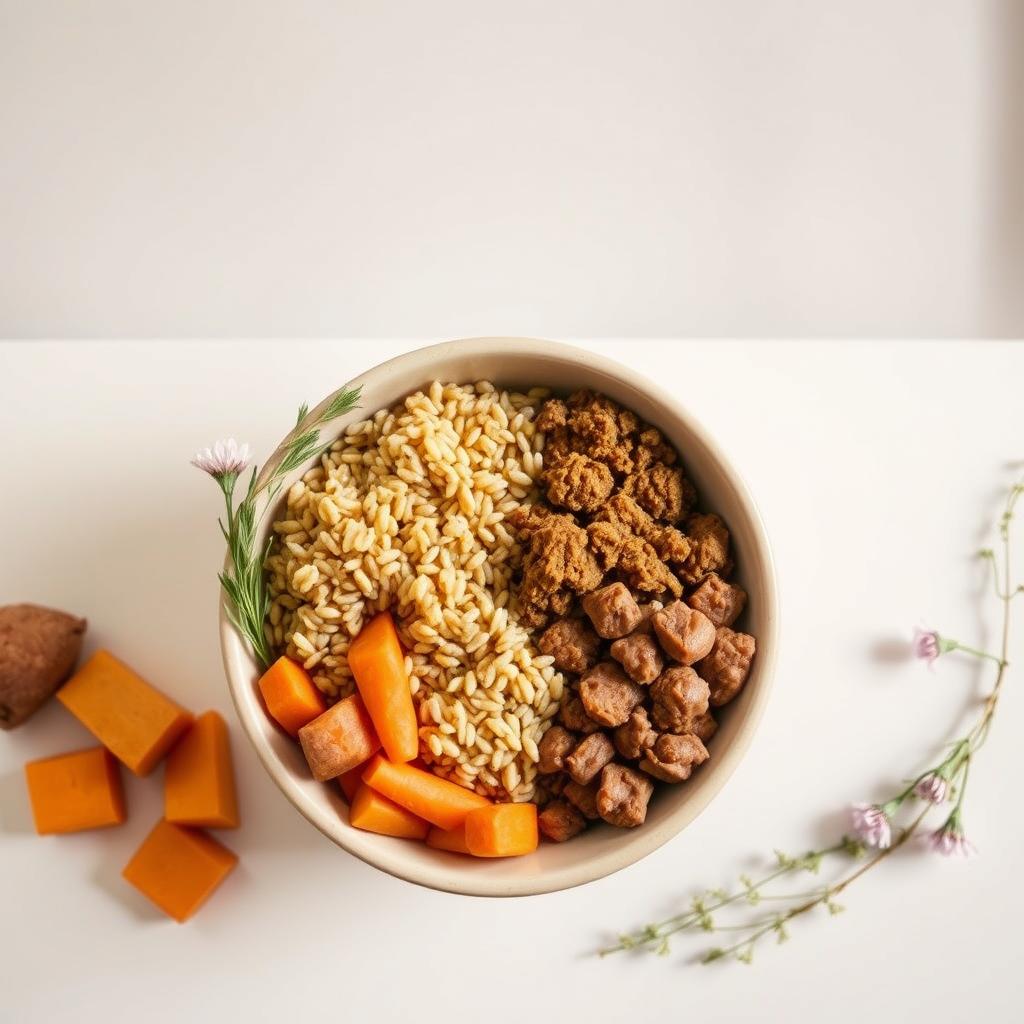
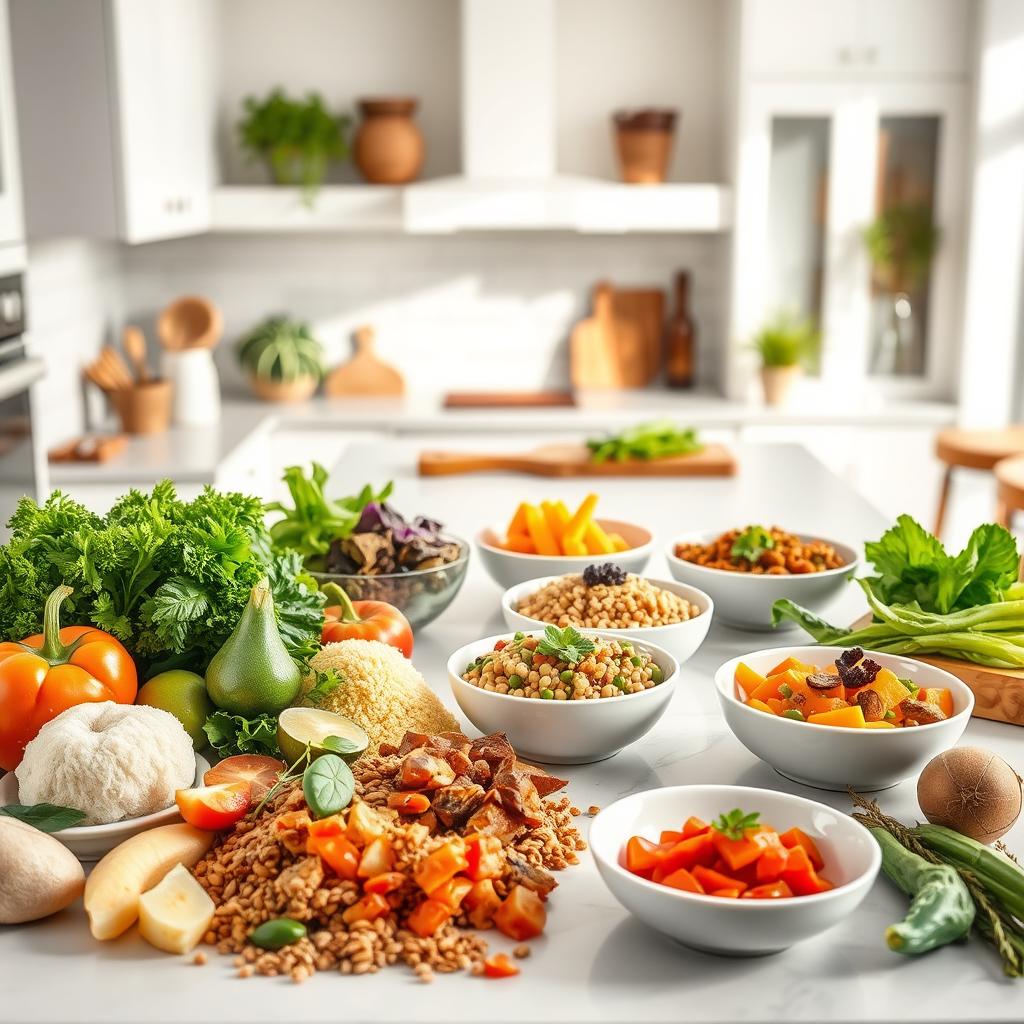

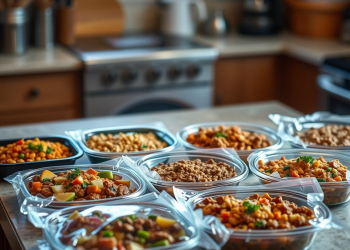
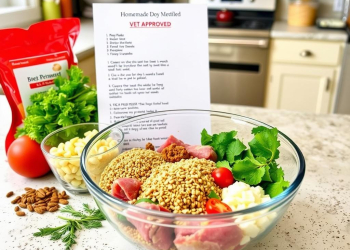

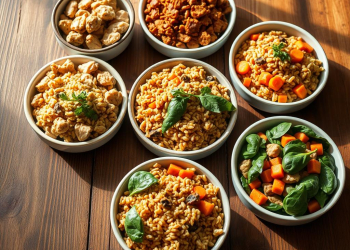










Discussion about this post